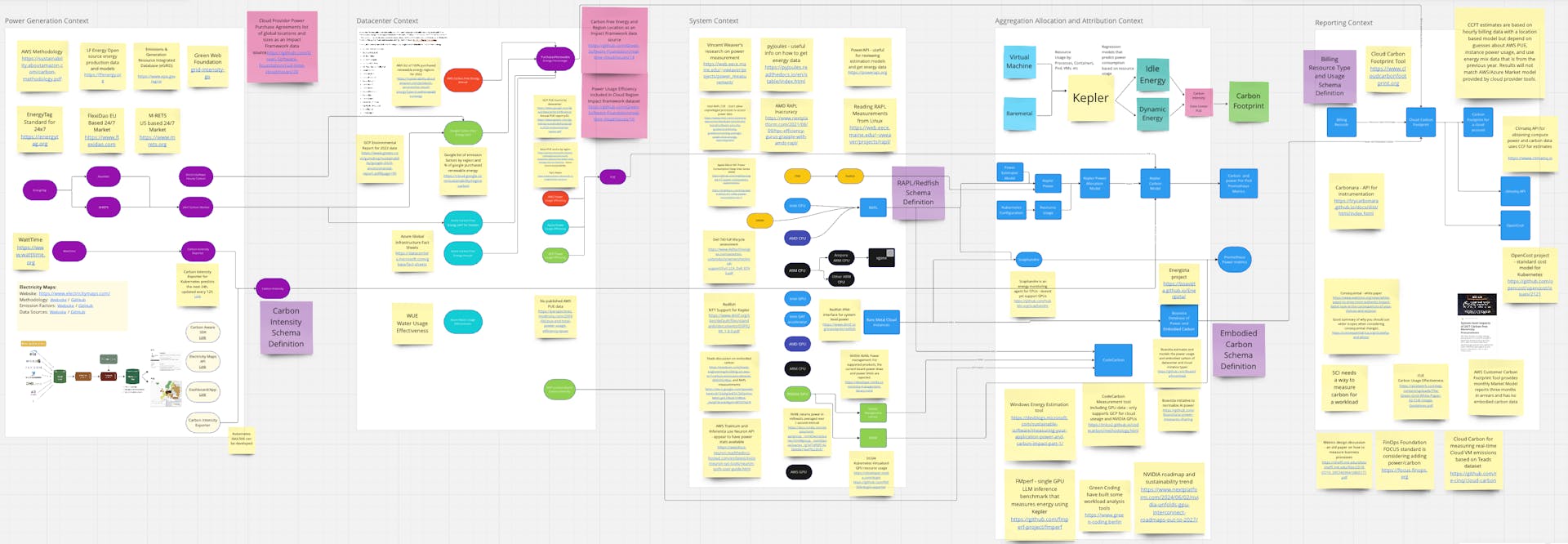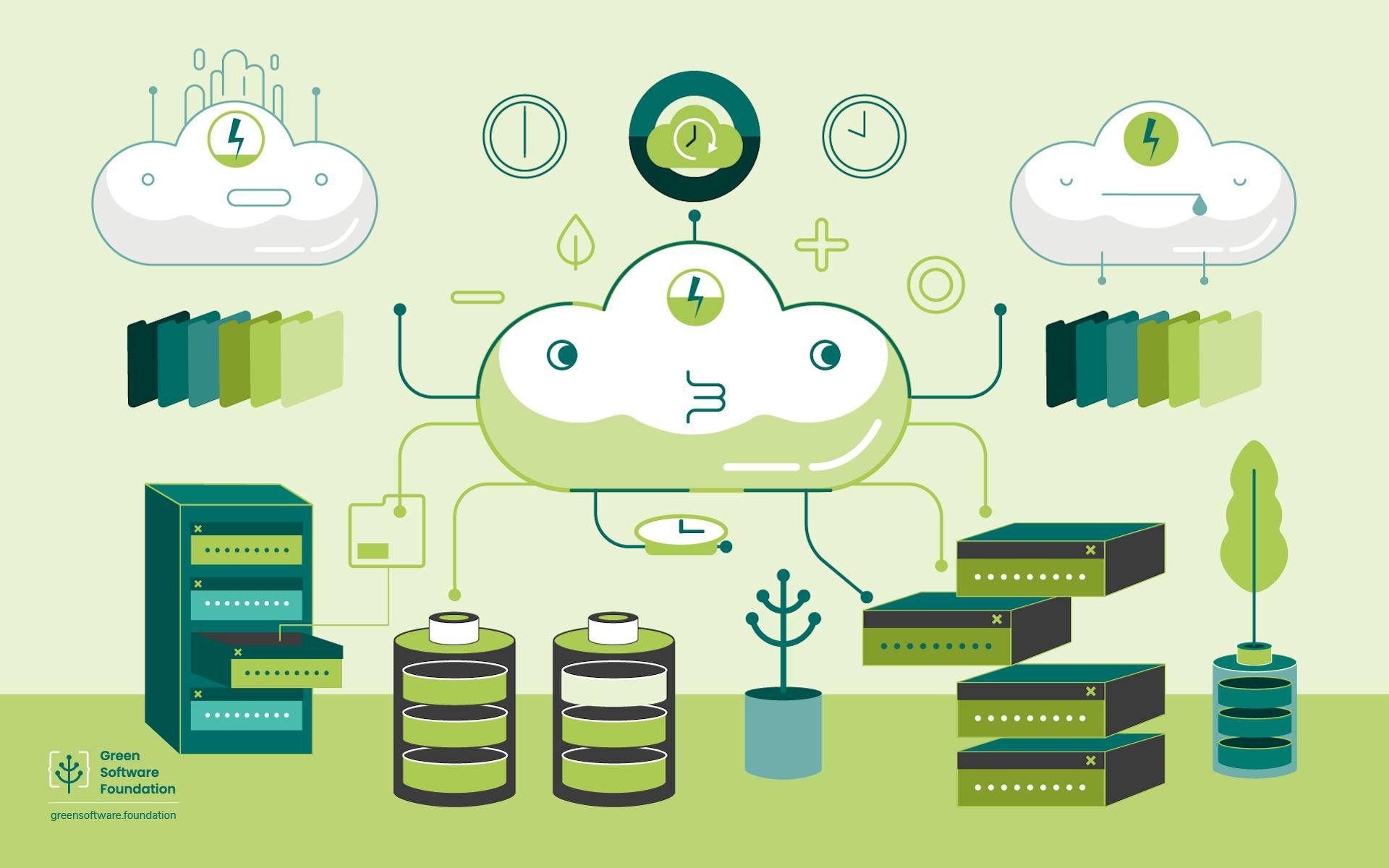What Ratification of the Real Time Cloud Means for Green Software
Understanding the complexities of accurately reporting the environmental impact of using cloud services is crucial to sustainable operations. Access to real-time emissions data allows for verified claims, regulatory adherence, and better evaluation against on-premise alternatives.
Despite being the world’s largest purchaser of renewable energy, cloud providers have only released carbon data to customers on a monthly basis, with delays of a few months. This gap leaves users relying on public data that overlooks these clean energy investments, resulting in inflated emissions estimates.
To support accurate tracking and compliance, the Real Time Energy and Carbon Standard for Cloud Providers, also known as the Real Time Cloud, was launched in July 2023 by Adrian Cockcroft under the GSF Standards Working Group.
We are thrilled to announce the ratification of the project under the leadership of Adrian Cockcroft and Pindy Bhullar (UBS). By standardizing how cloud providers share energy and carbon metrics, this initiative addresses critical gaps in cloud sustainability reporting, empowering users to make more informed, environmentally responsible decisions about their cloud workloads.
In this article, we share more about the Real Time Cloud, what reaching this maturity level means, and its future plans.
A Closer Look at the Real Time Cloud
"All models are wrong, some models are useful."
George Box
The project aims to make the carbon emissions model for cloud-based workloads less wrong and more useful by providing a standard mechanism for cloud providers to share detailed information.
Our goal is to ensure that real-time carbon metrics are available and can be aggregated, allocated, and apportioned throughout the information technology supply chain.
Since its inception, the Real Time Cloud Working Group, which brings together cloud emissions producers and consumers, has met every two weeks to work on improving real-time energy and carbon reporting for cloud users. The WG has made some significant strides in making datasets available in the public domain:
As part of the initial work, multiple sources, interfaces, and products that collect and report energy and carbon data have been documented in a large Miro flow.
Regional metadata covering 2022 datasets from the three largest cloud providers, AWS, Azure, and Google Cloud Platform (GCP), was published in a single table. This provides comparable numbers to report emissions from the cloud for those using more than one provider.
As a project, we are currently in the process of including the latest data releases for 2023 and plan to provide estimates for 2024 and 2025 before the cloud providers disclose their data.
We plan to release slowly changing reference data through the GSF Impact Framework. So far, this includes Power Usage Efficiency (PUE), Water Usage Efficiency (WUE), Carbon-Free Energy, a placeholder for EU Datacenter disclosure data, and information on Power Purchase Agreement locations.
Additionally, the Real Time Cloud has advocated for cloud providers to align their disclosures across platforms.
We officially released the collected data in August 2024, and several updates have been made since, with the most recent one in December 2024. To access these updates, visit the project’s GitHub repository.

Building on Our Values
The Real Time Cloud project is rooted in a mission to achieve greater transparency and sustainability in the cloud computing industry. It helps organizations clearly and transparently communicate and validate their sustainability claims, minimizing the risk of misinformation and supporting effective emissions reductions.
With growing regulatory requirements like the Corporate Sustainability Reporting Directive (CSRD) in Europe, many organizations are now required to disclose greenhouse gas emissions from their cloud computing services as part of their Scope 3 emissions. By providing a robust, real-time framework for carbon reporting, the Real Time Cloud project equips companies with the data they need to comply with regulations and make sustainability-driven decisions.
Get Involved
All data is openly available for exploration, and we welcome your participation.
We are currently seeking contributions to produce the best estimate of region metadata for the current year for anyone to use. To contribute to and learn more, we invite you to visit the GitHub issue.
To make a meaningful impact on sustainability, organizations must align themselves with influential industry leaders and partners known for their dedication to sustainable practices and innovative solutions. Collaborating with these key players offers access to valuable insights, cutting-edge technologies, and strategic guidance that can enhance sustainability initiatives and drive transformational change across various sectors.
Explore our GSF Organizational members who are working together to make a difference, led by our Steering Members: Avanade, BCG X, Cisco, Google, Microsoft, NTT DATA Corporation, Siemens, and UBS.
To contribute to our work, become a member.
This article is licenced under Creative Commons (CC BY 4.0)
